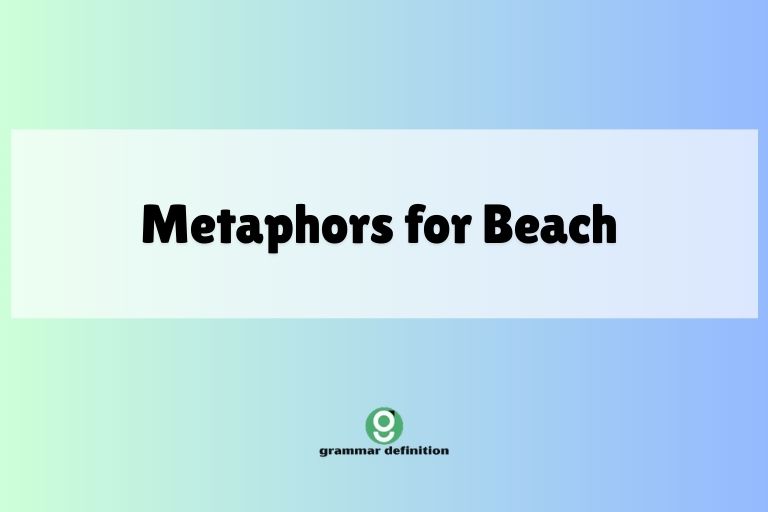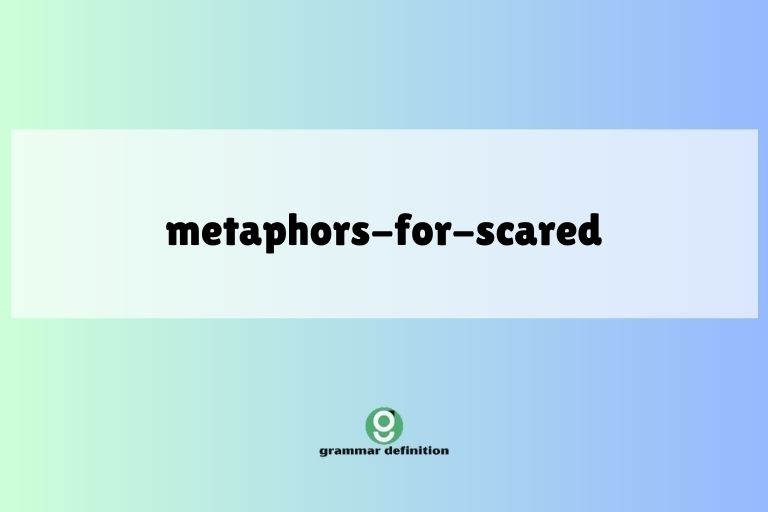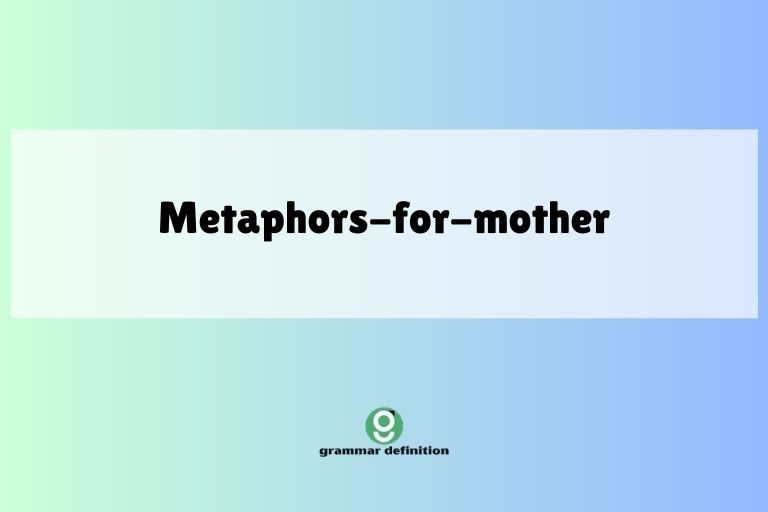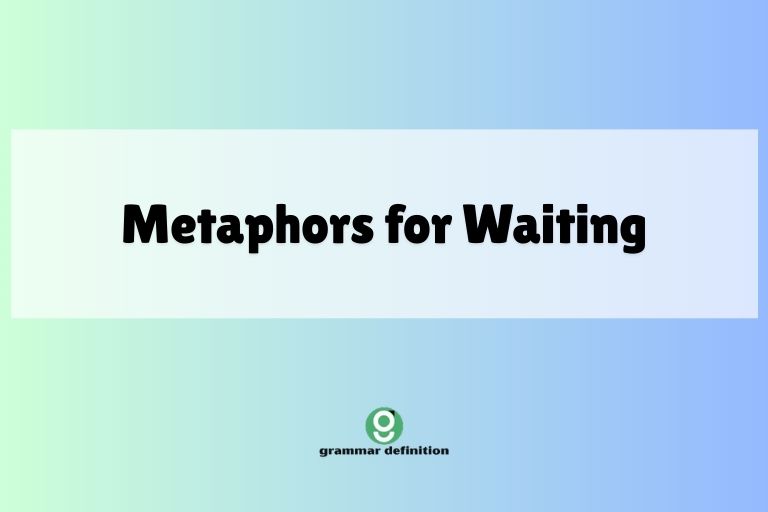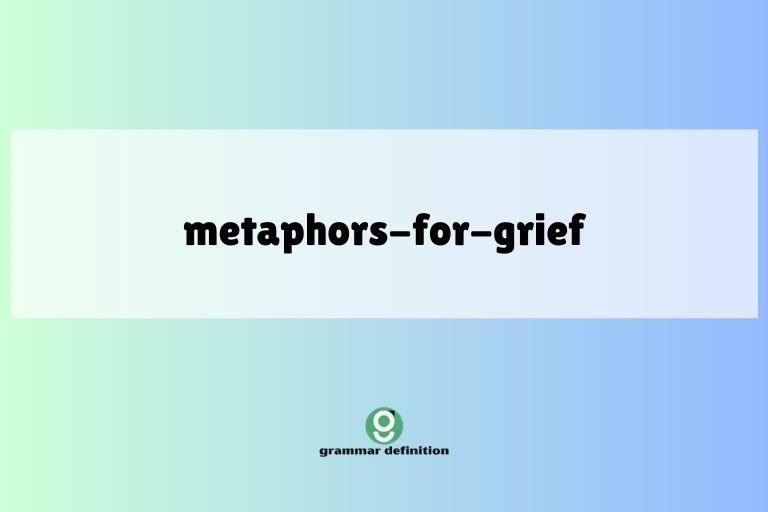Metaphors for Marriage: A Comprehensive Guide

Marriage, a cornerstone of society and a deeply personal commitment, is often described using metaphors that capture its multifaceted nature. These metaphors go beyond literal descriptions, offering insights into the perceived dynamics, challenges, and joys of marital life.
Understanding these metaphors enhances our comprehension of the cultural and emotional significance of marriage, providing a richer perspective on its complexities. This article explores various metaphors used to describe marriage, analyzing their meanings, implications, and usage within the English language.
This guide is perfect for English language learners and anyone interested in understanding the rich tapestry of expressions used to describe this important union.
By exploring the different types of metaphors used to describe marriage, we can gain a deeper appreciation for the diverse perspectives on this institution. We will delve into the structural elements of these metaphors, providing clear examples and practical exercises to solidify your understanding.
This article is designed for English language learners of all levels, from beginners to advanced speakers, as well as anyone interested in the cultural and linguistic nuances of marriage metaphors.
Table of Contents
- Definition of Metaphors for Marriage
- Structural Breakdown of Marriage Metaphors
- Types of Marriage Metaphors
- Examples of Marriage Metaphors
- Usage Rules for Marriage Metaphors
- Common Mistakes with Marriage Metaphors
- Practice Exercises
- Advanced Topics: Nuances and Subtleties
- Frequently Asked Questions
- Conclusion
Definition of Metaphors for Marriage
A metaphor is a figure of speech that directly compares two unlike things without using “like” or “as.” In the context of marriage, metaphors are used to describe the relationship, its dynamics, and its overall nature by drawing parallels with other concepts or experiences. These metaphors often reveal underlying assumptions and cultural beliefs about marriage. They function as a powerful tool for expressing complex emotions and abstract ideas related to the marital bond.
Marriage metaphors go beyond simple descriptions; they offer a lens through which we can understand the various aspects of a marital relationship. They can highlight the challenges, the joys, the responsibilities, and the overall significance of marriage.
By understanding these metaphors, we can better appreciate the diverse perspectives on this important institution and communicate more effectively about it.
Structural Breakdown of Marriage Metaphors
Marriage metaphors, like all metaphors, consist of two main components: the tenor and the vehicle. The tenor is the subject being described (in this case, marriage), and the vehicle is the concept or image used to describe it. The effectiveness of a metaphor lies in the connection between the tenor and the vehicle, and how well the vehicle illuminates certain aspects of the tenor.
For example, in the metaphor “Marriage is a journey,” the tenor is “marriage,” and the vehicle is “a journey.” The connection lies in the shared characteristics of both: they both involve progress, challenges, unexpected turns, and the need for navigation. The structural breakdown helps us analyze how the metaphor functions and what aspects of marriage it emphasizes.
Understanding the structure of a metaphor allows us to deconstruct its meaning and appreciate its nuances. It also enables us to create our own metaphors for marriage, tailoring them to specific situations or perspectives.
When crafting or interpreting marriage metaphors, it’s essential to consider the context and the intended audience, as the meaning can vary depending on these factors.
Types of Marriage Metaphors
Marriage metaphors can be broadly categorized based on the concepts they draw upon. Here are some common types of marriage metaphors:
Marriage as a Journey
This is one of the most common metaphors for marriage. It emphasizes the idea that marriage is a process with a beginning, middle, and end (though hopefully, the end is far off!).
It highlights the ups and downs, the challenges, and the growth that occurs along the way. The “journey” metaphor often includes sub-metaphors such as “navigating rough waters,” “reaching milestones,” and “being on the same path.”
Marriage as a Partnership
This metaphor focuses on the idea that marriage is a collaborative effort, where both partners contribute equally and work together towards common goals. It emphasizes teamwork, mutual support, and shared responsibility.
Key sub-metaphors include “being on the same team,” “sharing the workload,” and “supporting each other’s dreams.”
Marriage as a Battlefield
This metaphor, while often negative, highlights the conflicts and struggles that can arise in a marriage. It emphasizes the need for compromise, negotiation, and sometimes, outright combat.
Sub-metaphors include “fighting for your marriage,” “winning arguments,” and “drawing battle lines.” It’s important to note that this metaphor can be harmful if overused or taken too literally.
Marriage as a Garden
This metaphor emphasizes the need for care, attention, and nurturing in a marriage. It highlights the idea that a marriage, like a garden, needs to be tended to in order to thrive.
Sub-metaphors include “watering the relationship,” “weeding out problems,” and “cultivating love.”
Marriage as an Institution
This metaphor focuses on the formal and societal aspects of marriage. It emphasizes the rules, regulations, and expectations that come with being married.
While less common in modern usage, it highlights the historical and legal significance of marriage. Sub-metaphors include “following the rules,” “upholding traditions,” and “meeting societal expectations.”
Examples of Marriage Metaphors
The following tables provide extensive examples of marriage metaphors, categorized by type. Each example illustrates how the metaphor is used and its underlying meaning.
Table 1: Marriage as a Journey
This table illustrates how the “marriage as a journey” metaphor is used in various contexts. Notice how the examples emphasize progress, challenges, and shared experiences.
| Example | Meaning |
|---|---|
| “Their marriage is a long and winding road.” | Marriage has many unexpected turns and challenges. |
| “They’re navigating the rough waters of early marriage.” | They are facing difficulties in the initial stages of their marriage. |
| “They’ve reached a major milestone in their marriage.” | They have achieved a significant accomplishment together. |
| “They’re on the same path, heading towards a shared future.” | They have aligned goals and are working towards a common future. |
| “The road ahead may be bumpy, but they’ll face it together.” | They anticipate challenges but are committed to overcoming them as a couple. |
| “Their marriage has been a rollercoaster of emotions.” | Their marriage has had many highs and lows. |
| “They’re cruising along in their marriage, enjoying the ride.” | Their marriage is going smoothly and they are enjoying their time together. |
| “They’ve hit a roadblock in their marriage.” | They are facing a significant obstacle in their marriage. |
| “They’re lost in their marriage, trying to find their way back to each other.” | They are feeling disconnected and trying to reconnect. |
| “The journey of marriage has strengthened their bond.” | Overcoming challenges together has made their relationship stronger. |
| “They packed their bags and started the adventure of marriage.” | They enthusiastically embraced the new experiences of married life. |
| “They’re charting a new course for their marriage.” | They are making significant changes to their relationship’s direction. |
| “Their marriage is a scenic route with breathtaking views.” | Their marriage is filled with beautiful and memorable moments. |
| “They’re facing a fork in the road in their marriage.” | They have reached a point where they need to make a crucial decision. |
| “They’re climbing the mountain of marriage together.” | They are working hard to overcome challenges and achieve their goals. |
| “Their marriage is a marathon, not a sprint.” | Marriage requires endurance and long-term commitment. |
| “They’re navigating the map of their marriage, planning their future.” | They are carefully considering their future goals and making plans together. |
| “Their marriage is a pilgrimage, a journey of spiritual growth.” | Marriage is helping them grow spiritually and connect on a deeper level. |
| “They’re sailing the seas of marriage, weathering every storm.” | They are facing and overcoming challenges in their marriage together. |
| “Their marriage is a constant exploration, discovering new things about each other.” | They are continually learning and growing together in their marriage. |
| “They are enjoying the scenic vistas of their marriage, appreciating the beauty around them.” | They are cherishing the positive aspects and experiences in their marriage. |
| “The detours in their marriage have made them stronger.” | Unexpected challenges have ultimately fortified their relationship. |
| “They are walking hand-in-hand on the path of marriage.” | They are supporting each other and facing life together as a united couple. |
| “Their marriage is a voyage of discovery, uncovering hidden treasures.” | They are constantly learning new things about each other and their relationship. |
Table 2: Marriage as a Partnership
This table presents examples of the “marriage as a partnership” metaphor. Note the emphasis on collaboration, mutual support, and shared goals.
| Example | Meaning |
|---|---|
| “They’re a great team, always supporting each other.” | They work well together and provide mutual support. |
| “They share the workload equally, both inside and outside the home.” | They divide responsibilities fairly. |
| “They’re partners in crime, always up for an adventure together.” | They enjoy doing things together and share a sense of fun. |
| “They’re building a life together, brick by brick.” | They are working together to create a stable and fulfilling life. |
| “They’re co-captains of their ship, navigating life’s challenges together.” | They share leadership and decision-making responsibilities. |
| “They are business partners in the enterprise of marriage.” | They approach their marriage with a sense of shared responsibility and commitment. |
| “They are dance partners, moving in sync with each other.” | They have a natural rhythm and understanding in their relationship. |
| “They are each other’s biggest cheerleaders, always encouraging one another.” | They provide unwavering support and motivation for each other. |
| “They are collaborators in the art of creating a beautiful life together.” | They work together to build a fulfilling and meaningful life. |
| “They are teammates, working towards a common victory.” | They share goals and support each other in achieving them. |
| “They are two halves of a whole, completing each other.” | They complement each other and bring out the best in one another. |
| “They are co-pilots, sharing the responsibility of navigating life’s journey.” | They share decision-making and support each other in life’s challenges. |
| “Their marriage is a symphony, with each partner playing a vital role.” | They contribute unique talents and skills to create a harmonious relationship. |
| “They are partners in the garden of life, tending to their shared dreams.” | They nurture their shared goals and aspirations together. |
| “They are co-authors of their life story, writing each chapter together.” | They create their life experiences together, shaping their shared narrative. |
| “They are fellow travelers, exploring the world hand-in-hand.” | They share a sense of adventure and enjoy experiencing life together. |
| “They are business partners, managing the household finances together.” | They share financial responsibilities and make financial decisions together. |
| “They are co-creators, building a beautiful home filled with love and laughter.” | They work together to create a warm and welcoming home environment. |
| “They are each other’s confidantes, sharing their deepest thoughts and feelings.” | They trust each other and provide emotional support. |
| “They are partners in the dance of life, gracefully moving together through every step.” | They navigate life’s challenges and joys with grace and understanding. |
| “They are each other’s anchors, providing stability and support during turbulent times.” | They offer emotional support and stability to each other during difficult periods. |
| “They are co-artists, painting a masterpiece of love and commitment together.” | They create a beautiful and enduring relationship through their shared efforts. |
| “They are partners in the adventure of parenting, raising their children together with love and care.” | They share the responsibilities and joys of raising their children together. |
| “They are each other’s compass, guiding each other through life’s uncertainties.” | They provide direction and support to each other in making important decisions. |
Table 3: Marriage as a Battlefield
This table illustrates the “marriage as a battlefield” metaphor. Note the emphasis on conflict, struggle, and the need for resolution.
While this metaphor can be negative, it can also highlight the importance of working through disagreements.
| Example | Meaning |
|---|---|
| “They’re always fighting for their marriage.” | They are constantly battling to keep their marriage together. |
| “They’re drawing battle lines over minor disagreements.” | They are making small issues into major conflicts. |
| “They’re locked in a constant power struggle.” | They are constantly competing for control in the relationship. |
| “Their marriage is a war zone.” | Their marriage is filled with conflict and negativity. |
| “They’re always on the defensive, protecting themselves from each other.” | They are constantly guarding themselves against emotional harm. |
| “They engage in guerilla warfare, using subtle tactics to undermine each other.” | They engage in passive-aggressive behavior to hurt each other. |
| “Their marriage is a constant tug-of-war, with neither willing to give in.” | They are constantly competing and unwilling to compromise. |
| “They’re fighting tooth and nail to win every argument.” | They are fiercely competitive and determined to win every disagreement. |
| “Their marriage is a minefield, where one wrong step can trigger an explosion.” | They are constantly walking on eggshells, afraid of upsetting each other. |
| “They’re locked in an arms race of resentment, constantly escalating their conflicts.” | They are constantly building up resentment and escalating their arguments. |
| “They are strategic adversaries, carefully planning their next move.” | They approach their conflicts with calculated tactics and strategies. |
| “Their marriage is a constant battle of wills, with each partner determined to prevail.” | They are constantly competing for dominance in the relationship. |
| “They are locked in a stalemate, unable to resolve their differences.” | They have reached a point where they cannot find common ground. |
| “Their relationship is a battlefield of unmet expectations.” | They are constantly disappointed because their expectations are not being met. |
| “They are combatants in a war of attrition, slowly wearing each other down.” | They are gradually exhausting each other through constant conflict. |
| “Their marriage is a boxing ring, where they spar verbally and emotionally.” | They engage in intense verbal and emotional sparring. |
| “They are warriors, fighting for their marriage against external forces.” | They are battling external challenges that threaten their relationship. |
| “Their relationship is a power struggle, with each partner vying for control.” | They are constantly competing for dominance and influence. |
| “They are locked in a war of words, exchanging hurtful insults and accusations.” | They engage in verbal attacks and hurtful communication. |
| “Their marriage is a battlefield of unresolved issues, constantly erupting into new conflicts.” | They have underlying issues that continue to cause conflict. |
| “They are soldiers, defending their positions and refusing to compromise.” | They are unwilling to yield or find common ground in their disagreements. |
| “Their relationship is a battleground of conflicting values and beliefs.” | They have fundamental differences that lead to conflict. |
| “They are adversaries, constantly challenging and questioning each other’s decisions.” | They are constantly critical and questioning of each other’s actions. |
| “Their marriage is a battlefield of emotional wounds, inflicted by past hurts and betrayals.” | They carry emotional baggage that continues to cause pain and conflict. |
Table 4: Marriage as a Garden
This table presents examples of the “marriage as a garden” metaphor. Observe the emphasis on nurturing, growth, and tending to the relationship.
| Example | Meaning |
|---|---|
| “They’re watering their relationship with love and affection.” | They are nurturing their relationship with care and attention. |
| “They’re weeding out the negativity in their marriage.” | They are addressing and removing negative influences. |
| “They’re cultivating a strong and healthy marriage.” | They are working to build a thriving relationship. |
| “Their marriage is a blossoming garden, full of beauty and life.” | Their marriage is flourishing and vibrant. |
| “They’re planting seeds of hope for the future of their marriage.” | They are investing in the long-term success of their relationship. |
| “They are tending to their relationship with patience and care.” | They are nurturing their relationship with consistent effort. |
| “Their marriage is a fertile ground for growth and personal development.” | Their relationship supports individual growth and development. |
| “They are pruning away the dead branches of resentment and bitterness.” | They are letting go of negative emotions and past hurts. |
| “Their marriage is a sanctuary, a peaceful garden where they can find solace.” | Their relationship provides comfort and refuge from the outside world. |
| “They are nurturing their love like a delicate flower, protecting it from harm.” | They are carefully safeguarding their relationship from threats. |
| “Their relationship is a garden of shared dreams, carefully cultivated over time.” | They nurture their shared aspirations and goals together. |
| “They are planting seeds of kindness and compassion in their marriage.” | They cultivate a caring and empathetic relationship. |
| “Their marriage is a vibrant ecosystem, where each partner contributes to the overall health and well-being.” | They create a balanced and harmonious relationship. |
| “They are fertilizing their relationship with open communication and honest expression.” | They foster a relationship built on trust and transparency. |
| “Their marriage is a living tapestry, woven with threads of love, loyalty, and commitment.” | They create a rich and meaningful relationship through their shared experiences. |
| “They are harvesting the fruits of their labor, enjoying the rewards of their hard work.” | They reap the benefits of their efforts in nurturing their relationship. |
| “Their relationship is a garden of forgiveness, where they let go of past mistakes and move forward together.” | They practice forgiveness and reconciliation in their relationship. |
| “They are protecting their marriage from pests and diseases, addressing issues before they escalate.” | They proactively address problems and prevent them from worsening. |
| “Their marriage is a haven, a peaceful retreat where they can reconnect and recharge.” | Their relationship provides a sanctuary from the stresses of daily life. |
| “They are cultivating a culture of appreciation and gratitude in their marriage.” | They express gratitude and appreciation for each other. |
| “Their relationship is a garden of shared values, where they grow together in harmony.” | They share fundamental values that guide their relationship. |
| “They are nurturing their marriage with quality time and shared experiences.” | They prioritize spending time together and creating memories. |
| “Their relationship is a garden of trust, where they feel safe and secure in each other’s love.” | They have a strong foundation of trust and security in their relationship. |
| “They are tending to their marriage with patience, understanding that growth takes time.” | They exercise patience and understanding in nurturing their relationship. |
Table 5: Marriage as an Institution
This table showcases examples of the “marriage as an institution” metaphor. Note the emphasis on rules, traditions, and societal expectations.
| Example | Meaning |
|---|---|
| “They believe in upholding the traditions of marriage.” | They value the established customs and practices of marriage. |
| “They see marriage as a sacred institution.” | They view marriage as a respected and important part of society. |
| “They’re committed to following the rules of marriage.” | They adhere to the formal and societal expectations of marriage. |
| “They understand the legal obligations of marriage.” | They are aware of the legal rights and responsibilities of being married. |
| “They’re conforming to societal expectations of marriage.” | They are aligning their behavior with what society expects of married couples. |
| “They respect the historical significance of marriage.” | They appreciate the long-standing traditions and importance of marriage. |
| “Their marriage is built on a foundation of commitment and stability.” | Their relationship is characterized by long-term dedication and security. |
| “They embrace the social contract of marriage, understanding its responsibilities.” | They accept the mutual obligations and expectations of marriage. |
| “Their marriage is a structured framework, providing stability and security.” | Their relationship offers a sense of order and predictability. |
| “They are committed to preserving the sanctity of marriage.” | They value and uphold the sacredness of the marital bond. |
| “Their marriage is a union recognized and protected by law.” | Their relationship is legally binding and entitled to legal protections. |
| “They are bound by the vows they made on their wedding day.” | They are committed to fulfilling the promises they made to each other. |
| “Their marriage is a testament to the enduring power of tradition.” | Their relationship honors and upholds traditional values. |
| “They are custodians of the institution of marriage, preserving its values for future generations.” | They see themselves as responsible for maintaining the integrity of marriage. |
| “Their marriage is a cornerstone of their family and community.” | Their relationship is a central and important part of their social network. |
| “They are committed to upholding the moral and ethical principles of marriage.” | They adhere to a strong code of conduct in their relationship. |
| “Their marriage is a symbol of their commitment to each other and to society.” | Their relationship represents their dedication to each other and their community. |
| “They are dedicated to honoring the vows and obligations of marriage.” | They take their marital commitments seriously and strive to fulfill them. |
| “Their marriage is a reflection of their respect for tradition and societal norms.” | Their relationship aligns with traditional values and expectations. |
| “They are committed to preserving the integrity and stability of their marriage.” | They prioritize maintaining a strong and enduring relationship. |
Usage Rules for Marriage Metaphors
When using marriage metaphors, it’s important to consider the following rules:
- Context is key: Choose metaphors that are appropriate for the situation and audience. A “battlefield” metaphor might be suitable for discussing challenges, but not for celebrating an anniversary.
- Avoid clichés: Try to be original and avoid overused metaphors. Clichés can lose their impact and make your writing sound uninspired.
- Be consistent: Once you’ve chosen a metaphor, stick with it throughout your writing. Mixing metaphors can be confusing and distracting.
- Consider the connotations: Be aware of the positive or negative connotations of the metaphor you choose. A “prison” metaphor, for example, carries negative connotations and should be used with caution.
- Ensure clarity: Make sure the connection between the tenor (marriage) and the vehicle (the metaphor) is clear and easily understood.
Common Mistakes with Marriage Metaphors
Here are some common mistakes to avoid when using marriage metaphors:
Incorrect: “Their marriage is a rollercoaster in a peaceful garden.” (Mixing metaphors)
Correct: “Their marriage is a rollercoaster of emotions.” (Consistent metaphor)
Incorrect: “Marriage is a walk in the park.” (Cliché, doesn’t capture the complexities of marriage)
Correct: “Marriage is a challenging hike up a mountain, but the view from the top is worth it.” (More specific and nuanced)
Incorrect: “Marriage is a prison.” (Negative connotation, unless used intentionally to express dissatisfaction)
Correct: “Marriage is a sanctuary.” (Positive connotation, suggests safety and comfort)
Practice Exercises
Test your understanding of marriage metaphors with these exercises.
Exercise 1: Identifying Metaphors
Identify the metaphor in each sentence and explain its meaning.
| Question | Answer |
|---|---|
| 1. Their marriage is a ship that has weathered many storms. | Metaphor: Ship weathering storms. Meaning: Their marriage has faced many challenges but has survived. |
| 2. They are the architects of their own marital bliss. | Metaphor: Architects. Meaning: They are actively building and designing their happy marriage. |
| 3. Their marriage is a dance of give and take. | Metaphor: Dance. Meaning: Their marriage requires balance and cooperation. |
| 4. They are the gardeners of their love, carefully tending to its needs. | Metaphor: Gardeners. Meaning: They actively nurture and care for their relationship. |
| 5. Their marriage is a fortress, protecting them from the outside world. | Metaphor: Fortress. Meaning: Their marriage provides safety and security. |
| 6. Their relationship is a puzzle, with each partner a unique piece. | Metaphor: Puzzle. Meaning: They complement each other and fit together perfectly. |
| 7. They are the conductors of their marital orchestra, creating beautiful harmony together. | Metaphor: Conductors. Meaning: They orchestrate their lives together to create a harmonious relationship. |
| 8. Their marriage is a canvas, where they paint their life story together. | Metaphor: Canvas. Meaning: They create their shared experiences and memories together. |
| 9. Their love is the glue that holds their marriage together. | Metaphor: Glue. Meaning: Love is the bond that keeps their relationship strong. |
| 10. They are the navigators of their marital journey, charting their course together. | Metaphor: Navigators. Meaning: They make decisions and guide their relationship together. |
Exercise 2: Creating Metaphors
Create your own metaphor for marriage, using the given concepts as vehicles.
| Concept | Your Metaphor |
|---|---|
| A River | Their marriage is a flowing river, sometimes calm and peaceful, sometimes turbulent and powerful, always moving forward. |
| A Building | Their marriage is a sturdy building, built on a foundation of trust and love, withstanding the test of time. |
| A Song | Their marriage is a beautiful song, with harmonies that blend perfectly and a rhythm that keeps them moving in sync. |
| A Tree | Their marriage is a strong tree, with deep roots of commitment and branches that reach towards the sky, growing together in strength and beauty. |
| A Quilt | Their marriage is a colorful quilt, stitched together with love, laughter, and shared memories, a warm and comforting embrace. |
| A Fire | Their marriage is a warm fire, providing comfort and light, requiring constant tending to keep the flame burning bright. |
| A Book | Their marriage is a captivating book, with each chapter filled with new adventures, challenges overcome, and lessons learned, a story they write together. |
| A Compass | Their marriage is a reliable compass, guiding them through life’s uncertainties, always pointing them in the right direction, towards their shared goals and dreams. |
| A Bridge | Their marriage is a strong bridge, connecting two souls, allowing them to cross the divides of life together, supporting each other through every challenge. |
| A Puzzle | Their marriage is a complex puzzle, with each partner a unique piece, fitting together perfectly to create a beautiful picture of love and commitment. |
Exercise 3: Correcting Mistakes
Identify and correct the mistake in each sentence.
| Incorrect Sentence | Corrected Sentence |
|---|---|
| 1. Their marriage is a rollercoaster in a peaceful harbor. | Their marriage is a rollercoaster of emotions. |
| 2. Marriage is just a walk in the park, easy peasy. | Marriage is a challenging journey, but the rewards are immense. |
| 3. Their marriage is a prison, but also a blossoming garden. | Their marriage can feel like a prison at times, but they are working to cultivate a blossoming garden of love. |
| 4. Their love is like a battlefield, always peaceful and calm. | Their love can sometimes feel like a battlefield, but they always find a way to make peace. |
| 5. They are watering their battlefield with love. | They are watering their garden of love with affection. |
| 6. Their marriage is a ship that’s also a garden, sailing through life. | Their marriage is a ship sailing through life’s waters, weathering storms together. |
| 7. They’re fighting to cultivate their battlefield of marriage. | They’re fighting to cultivate peace in their marriage. |
| 8. Their love is the glue that weeds out the problems. | Their love is the glue that holds
them together, helping them address their problems. |
Advanced Topics: Nuances and Subtleties
Advanced understanding of marriage metaphors involves recognizing their cultural and contextual nuances. The same metaphor can be interpreted differently based on cultural background, personal experiences, and individual perspectives.
For example, the “marriage as a battlefield” metaphor might resonate more with couples who have experienced significant conflict, while the “marriage as a garden” metaphor might appeal to those who prioritize nurturing and growth.
Furthermore, the effectiveness of a metaphor can depend on its subtlety and originality. Overly simplistic or cliché metaphors can lack impact, while more nuanced and creative metaphors can offer deeper insights.
Consider the use of extended metaphors, where a single metaphor is developed and expanded upon throughout a piece of writing. This can create a richer and more immersive experience for the reader.
Another advanced topic is the intentional subversion of marriage metaphors. By using a metaphor in an unexpected or ironic way, writers can challenge conventional assumptions about marriage and offer fresh perspectives.
For example, describing a seemingly idyllic marriage as a “perfectly manicured lawn” can subtly suggest a lack of authenticity or emotional depth. These subtleties can add layers of meaning and complexity to your writing.
Frequently Asked Questions
Why are metaphors used to describe marriage?
Metaphors provide a powerful way to express the complex and multifaceted nature of marriage. They allow us to understand abstract concepts and emotional experiences by comparing them to more concrete and relatable ideas.
How can I choose the right metaphor for marriage?
Consider the context, your audience, and the specific aspects of marriage you want to emphasize. Choose a metaphor that is clear, consistent, and appropriate for the situation.
Are some marriage metaphors better than others?
Not necessarily. The “best” metaphor depends on the specific message you want to convey and the audience you are trying to reach.
However, it’s generally advisable to avoid clichés and metaphors with overly negative connotations.
Can I create my own marriage metaphors?
Absolutely! Creating your own metaphors can be a great way to express your unique perspective on marriage and add originality to your writing.
How do cultural differences affect the interpretation of marriage metaphors?
Cultural differences can significantly influence the interpretation of marriage metaphors. What is seen as a positive metaphor in one culture may be viewed negatively in another.
It’s important to be aware of these cultural nuances when using and interpreting marriage metaphors.
What if I disagree with the common metaphors used to describe marriage?
That’s perfectly fine! Metaphors are subjective and open to interpretation.
If you don’t resonate with a particular metaphor, you can always choose a different one or create your own.
How can I avoid mixing metaphors when writing about marriage?
Plan your writing carefully and choose a central metaphor to guide your discussion. Stick with that metaphor throughout your piece, and avoid introducing conflicting or unrelated imagery.
Conclusion
Marriage metaphors offer a rich and insightful way to understand the complexities of marital relationships. By exploring the different types of metaphors, their structural elements, and their usage rules, we can gain a deeper appreciation for the diverse perspectives on marriage and communicate more effectively about it.
Whether you’re an English language learner or simply interested in the nuances of language, understanding marriage metaphors can enhance your comprehension and appreciation of this important institution.

